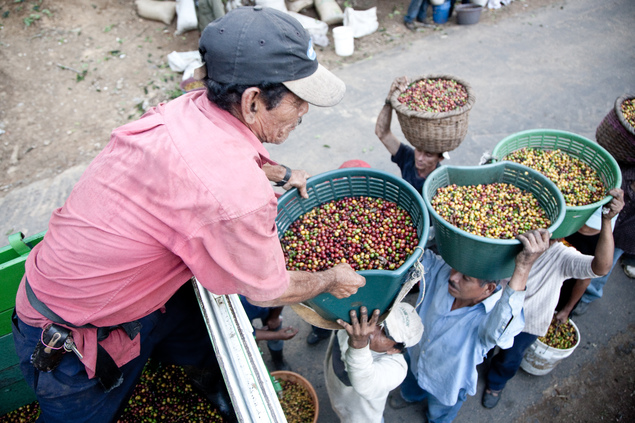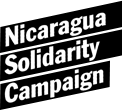Key facts omitted from ill-judged UNHCR Briefing on Nicaraguan Asylum Seekers
NSCAG News |
on: Sunday, 15 March 2020

A Nicaraguan coffee picker in Costa Rica; there have been Nicaraguan workers in Costa Rica for decades
On March 10th the UNHCR (United Nations High Commissioner for Refugees) produced a briefing on Nicaraguan asylum seekers in Costa Rica. A full copy of the briefing can be found here:
The briefing is totally lacking in context for most people who lived through the events of 2018 and beyond and extremely misleading for anyone unfamiliar with the local situation, especially as regards the long history of migration from Nicaragua to Costa Rica over many decades. It is disappointing that the UNHCR has produced a briefing bearing so little resemblance to reality and one so clearly unbalanced, based as it is on testimony from Nicaragua’s opposition with zero input from Nicaragua's own migratory authorities.
The briefing states that ‘Two years of political and social crisis in Nicaragua force more than 100,000 to flee’ and goes on to say ‘Nearly two years after Nicaragua was plunged into a serious political and social crisis, more than 100,000 people have fled reported persecution and human rights abuses in the country, seeking asylum abroad. Even after the initial surge of violence in April 2018 subsided, Nicaraguan students, human rights defenders, journalists and farmers continue to flee their country at an average rate of 4,000 people every month. With no resolution to the internal crisis in sight, UNHCR, the UN Refugee Agency, expects these numbers to grow.’
The UNHCR completely ignores the regular movement of thousands of Nicaraguan workers and their families to and from Costa Rica that has been a constant phenomenon for over fifty years. Estimates of the number of Nicaraguans living either legally or without documents have ranged from between 500,000 to over 800,000 ever since the war years of the 1980s.
For that reason, reports of 77,000 Nicaraguan asylum seekers need to be judged against the constant attempts by undocumented Nicaraguans in Costa Rica to regularise their immigration status. Nor does the UNHCR report the number of asylum applications granted by Costa Rica's authorities, which would give a truer account of this phenomenon.
Costa Rican officials have themselves said that many claiming asylum were already living in Costa Rica before the crisis. The express bus companies who operate between Costa Rica and Nicaragua are introducing new services because of the growth in traffic in both directions across what is and always has been a very fluid frontier.
The briefing fails to mention the numerous atrocities committed by so-called ‘peaceful’ protesters and gives no context as to why these people might have fled Nicaragua to escape justice. The fact is that many of those fleeing from Nicaragua had committed heinous, violent criminal acts – for example, the group that kidnapped, tortured and murdered police officer Gabriel de Jesús Vado Ruíz on July 14-15 2018 are known to have fled to Costa Rica. For their part, the Costa Rican authorities themselves have declaimed the violence of many so-called refugees.
The UNHCR also make no mention of the amnesties given to those who fled or were imprisoned and the return to the country of numerous leading opposition activists like the anti-interoceanic canal activist Francisca Ramirez, among many others. Many people who initially moved to Costa Rica have returned to Nicaragua including prominent people such as the very same opposition-aligned journalists and human rights activists mentioned by the UNHCR.
Indeed, all the main organisers of the opposition travel in and out of Nicaragua without no apparent problems. They have even travelled to Costa Rica to meet US Secretary of State Mike Pompeo to call for sanctions against their own country before returning to Nicaragua completely unhindered.
There is also no mention in UNHCR’S ‘findings’ of those who have committed crimes since they returned from Costa Rica or spent time there after being released under the 2019 amnesties. For example, in Masaya, in December, three police officers were killed and various officers injured in two separate incidents involving armed opposition terrorists returned from Costa Rica. Other amnestied opposition activists have also been arrested for violent common crimes including the femicide of Ruth Aburto Acevedo by opposition thug Jeyson Castro Ortez in Jinotepe.
Nicaragua is now in peace after the horrendous events of 2018, and it is therefore surprising, if not completely absurd, that the UNHCR reports 'no resolution' to the 2018 crisis in Nicaragua. Not only have various official amnesties taken place but also the opposition is openly and actively organising for the 2021 elections and opposition news media continue to publish and broadcast anti-government propaganda freely as they have always done while simultaneously falsely complaining about “dictatorship”.





